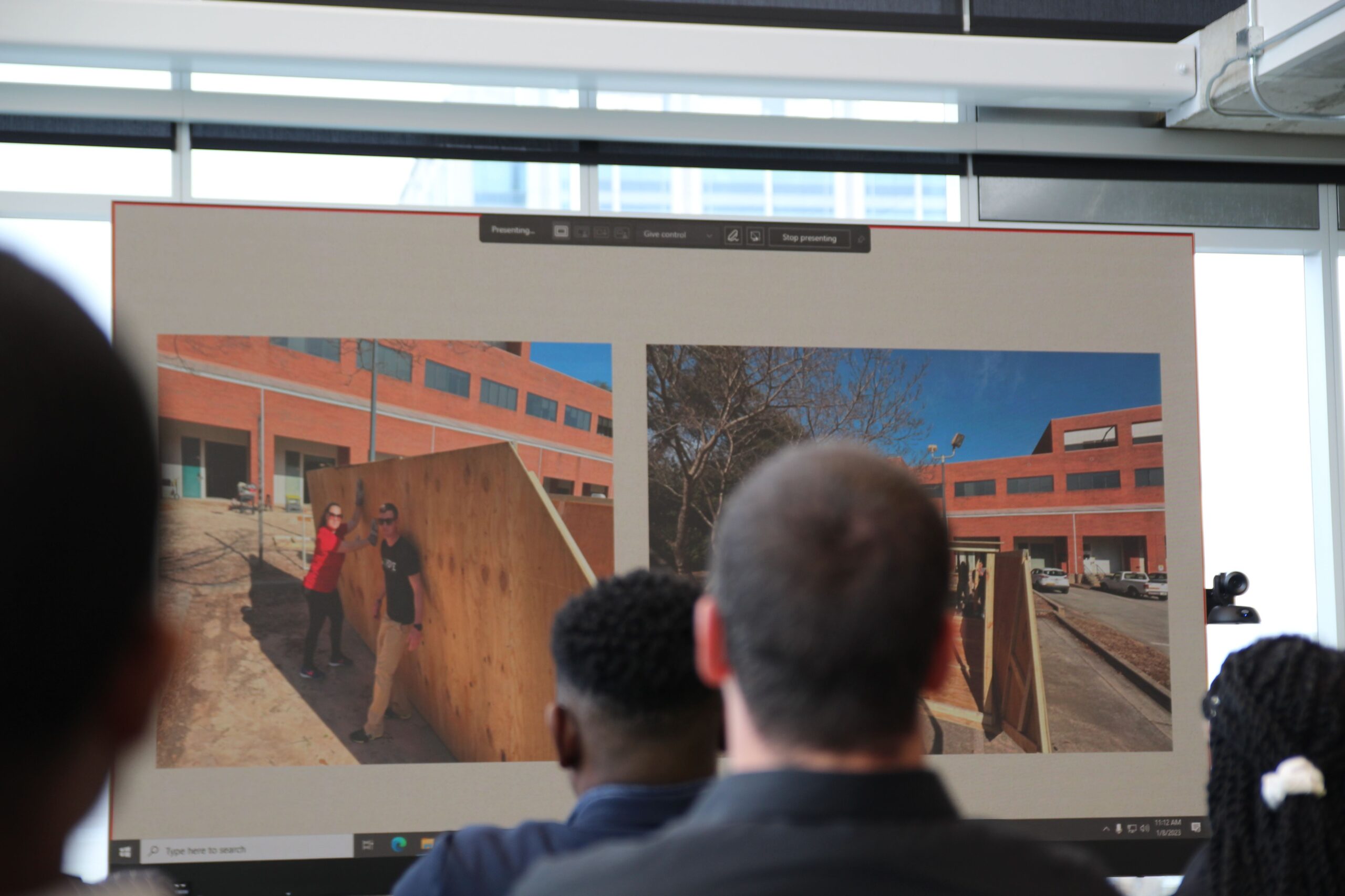ATLANTA — The enemy can’t kill what it can’t see. But as the war in Ukraine has laid bare, little goes unseen on the modern battlefield.
So the Army wants to give the enemy something else to see.
That’s why soldiers from the 3rd Infantry Division teamed up with engineering students from the Georgia Tech Research Institute for a “decoy hackathon” Jan. 6-9. Army Times observed the workshop’s final presentations Sunday, where participants shared their progress on projects based on the Bradley Fighting Vehicle and similar infantry fighting vehicle platforms.
Soldiers and students split into three teams focused on developing cost-effective, portable solutions to three common ways hostile forces identify Bradleys and similar vehicles — visual identification, heat signature detection and electromagnetic frequency signatures such as radio transmissions.
RELATED
:quality(70)/cloudfront-us-east-1.images.arcpublishing.com/archetype/QAXIJ6NCJJBGVD4CK2N4YITZQU.jpg)
The proposed visual decoy is made of materials that can be bought at any hardware store, participants said. Their goal is an intuitive, portable design that can be carried and set up quickly by a single infantry squad.
Other teams developed similarly portable and cost-effective ways to mimic radio transmissions and thermal profiles using off-the-shelf components, though they admitted that the workshop was merely a waypoint on a long developmental road.
Such decoys could help shape the battlefield by influencing enemy troops’ movements or even draw their fire, revealing their positions, the presenters said. One team outlined a hypothetical use scenario where a scout platoon sets up multiple decoys across an area and monitors the enemy’s response in order to ascertain their capabilities.
A sign sits at an entryway during a joint 3rd Infantry Division/Georgia Tech “decoy hackathon” event at Georgia Tech’s Coda Center in Atlanta, Ga., Jan. 8, 2023. (Davis Winkie/Staff)
The soldiers at the event were selected from a division-level innovation contest that took place in November, officials said. The division’s deputy innovation officer, 1st Lt. Chris Aliperti, told Army Times that judges quickly realized that multiple teams had pitched ideas related to vehicle decoys and decided to “bring them [to the workshop] to work on the problem.”
Aliperti, who recently completed a biomedical engineering master’s degree from Johns Hopkins University, added that the partnership with Georgia Tech was a natural fit. Last weekend’s workshop was the second such event, which the division aims to maintain annually.
He praised the institute’s “surplus of expertise, [with] some of the smartest students in the world with the time and resources dedicated to working on problems.” One of the officials that played a key role in establishing the partnership there also serves part-time as an Army Reserve officer in the 75th Innovation Command, he noted.
A soldier from the 3rd Infantry Division presents his team’s infantry fighting vehicle heat signature decoy project during a “decoy hackathon” event at Georgia Tech’s Coda Center in Atlanta, Ga., Jan. 8, 2023. (Davis Winkie/Staff)
A Bradley mechanic participating in the workshop, Sgt. Brent Saffron, said the workshop offered the space and tools needed to accelerate the decoy project his team was developing. His subject matter expertise combined with the general technical firepower available on site proved a formidable combination, he argued.
Sgt. Brent Saffron, assigned to the 10th Brigade Engineer Battalion, 1st Armored Brigade Combat Team, 3rd Infantry Division, cuts wood during the second Marne Innovation Workshop at the Georgia Institute of Technology in Atlanta Jan. 6, 2022. (Pfc. Bernabe Lopez III/Army)
“I’m a Bradley mechanic with 10 years of experience, so I know the vehicle really well…I was able to help them with their thermal detection systems and then I was able to help with the visual portion,” he explained. “The Georgia Tech students, they’re really brilliant engineers of different types. They were able to give us insights on our design that we wouldn’t have otherwise had access to.”
Aliperti and division innovation officer Maj. Patrick Kerins are hopeful that the teams’ work can converge to develop a full-spectrum decoy suitable for the modern battlefield. But even more important than the workshop’s focus, Kerins said in a release, is expanding the way soldiers across the division approach problem-solving and innovation.
“If we can build Soldiers to innovate in garrison, we’re building Soldiers that can adapt in being dynamic in combat where it’s going to matter,” Kerins said.
Davis Winkie is a senior reporter covering the Army, specializing in accountability reporting, personnel issues and military justice. He joined Military Times in 2020. Davis studied history at Vanderbilt University and UNC-Chapel Hill, writing a master’s thesis about how the Cold War-era Defense Department influenced Hollywood’s WWII movies.

